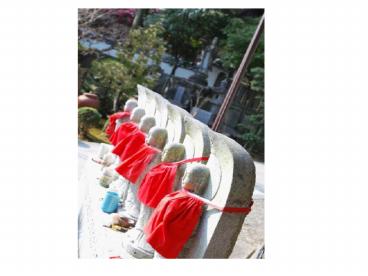Ancient Japan PowerPoint PPT Presentation
1 / 36
Title: Ancient Japan
1
(No Transcript)
2
(No Transcript)
3
(No Transcript)
4
(No Transcript)
5
(No Transcript)
6
(No Transcript)
7
(No Transcript)
8
(No Transcript)
9
(No Transcript)
10
(No Transcript)
11
(No Transcript)
12
Ancient Japan
- An Introduction
13
Our Records...
- Japan does not appear in history until 57 CE when
it is first mentioned in Chinese histories. In
these histories, it is referred to as "Wa." - The Chinese historians tell us of a land divided
into a hundred or so separate tribal communities
without writing or political unity.
14
Their Records...
- The Japanese do not start writing their histories
until around 600 AD this historical writing
culminates in 700 AD in the massive chronicles,
The Record of Ancient Matters and the Chronicles
of Japan. - These chronicles tell a much different and much
more legendary history of Japan, deriving the
people of Japan from the gods themselves.
15
Some Questions...
- Where did the Japanese come from?
- Why did they settle the islands?
- What did life look like before history was
written down?
16
Geography
17
(No Transcript)
18
The Islands
- Japan consists of over 400 Islands but only the
four largest are of historical importance
(Hokkaido, Honshu, Shikoku, and Kyushu) - Islands formed originally by violent volcanic
activity on the sea bottom - Mountainous land with numerous small rivers
flowing directly to the sea.
19
Lets look at size...
- Total land area of Japan is 380 000km2 (smaller
than Baffin Island) - Todays population is 125 million (five times
that of Canada) - 1/5th of the land sufficiently level enough to be
cultivated? therefore Japanese agriculture is one
of the most intensive in the entire world
20
Baffin Island vs. Japan
21
Temperature
- Major Islands have temperate climate and abundant
rainfall - Experiences few extremes in temperature
22
Resources
- Japan has few natural resources
- Must import almost all energy requirements (oil,
minerals, and a great deal of food) - Has an abundance of fish and a wide range of
vegetable crops - Has one of the worlds healthiest diets (lifespan
of the average Japanese person longest in the
world)
23
(No Transcript)
24
The Situation...
- Japanese Islands at the extreme edge of the
Eurasian land mass - At its closest point, 240 km from the Asian
continent - The Sea of Japan (difficult to cross)
- Japan deeply influenced by Chinese and Korean
civilization, but historical interaction never
continuous? Japan borrows and adapts
25
STOP.
26
Isolation
- Because of isolation? high degree of continuity
prior to the impact of Western imperialism in the
19th century - No real social disruptions, no revolutionary
thinkers? therefore the catalysts of change were
external influences (Chinese and Korean cultures)
27
10 000 BCE-710CE
- The Formative Period
28
And so we begin...
- During last ice age (ended 11, 000 years ago)
Japanese island joined with Asian mainland by a
land bridge - People from Korea, Northeast Asia crossed land
mass and settled - Earliest archaeological remains 9500 BCE
(earliest pottery remains in world history)
29
Over time...
- Joined by peoples from South China or Polynesian
Islands - Peoples blending together
- Creation of a distinct culture, Jomon (lasted
until 300 BCE)
30
The Ainu
- During same time another people came to Hokkaido.
- These people were called the Ainu.
- For centuries Ainu remained culturally distinct
from the rest of the Japanese - Today, less than 20, 000 left
- Origins a mystery
31
A Mixture
- Japanese people of mixed origin.
- Japanese ignore this, and instead emphasize their
mythological beginnings and their divine descent.
32
The Jomon
- Hunters, fishers, and gatherers
- Named after type of pottery decorated by pressing
rope into wet clay - Pottery later included human figures
- Large eyes (windows to soul)
- Women larger than men (Female dominance)
33
Examples
34
Blending
- 3rd Century BCE? Jomon begin blending with the
Yayoi - Yayoi brought knowledge of irrigated rice
cultivation, bronze and iron work, glass, and
mirrors - Culture from Korea?
35
Unity?
- 300 CE Japanese on Honshu joined together to form
a distinctive state - No written language yet? we rely on
archaeological evidence and Chinese accounts
36
Chinese Accounts (297 CE)
- Japanese as people who went barefoot, ate raw
vegetables, and bowed frequently - Japan ruled by queen (Pimiko)
- Problem with violence when men ruled
- In 1990 archaeologists discovered the fortress of
Pimiko

